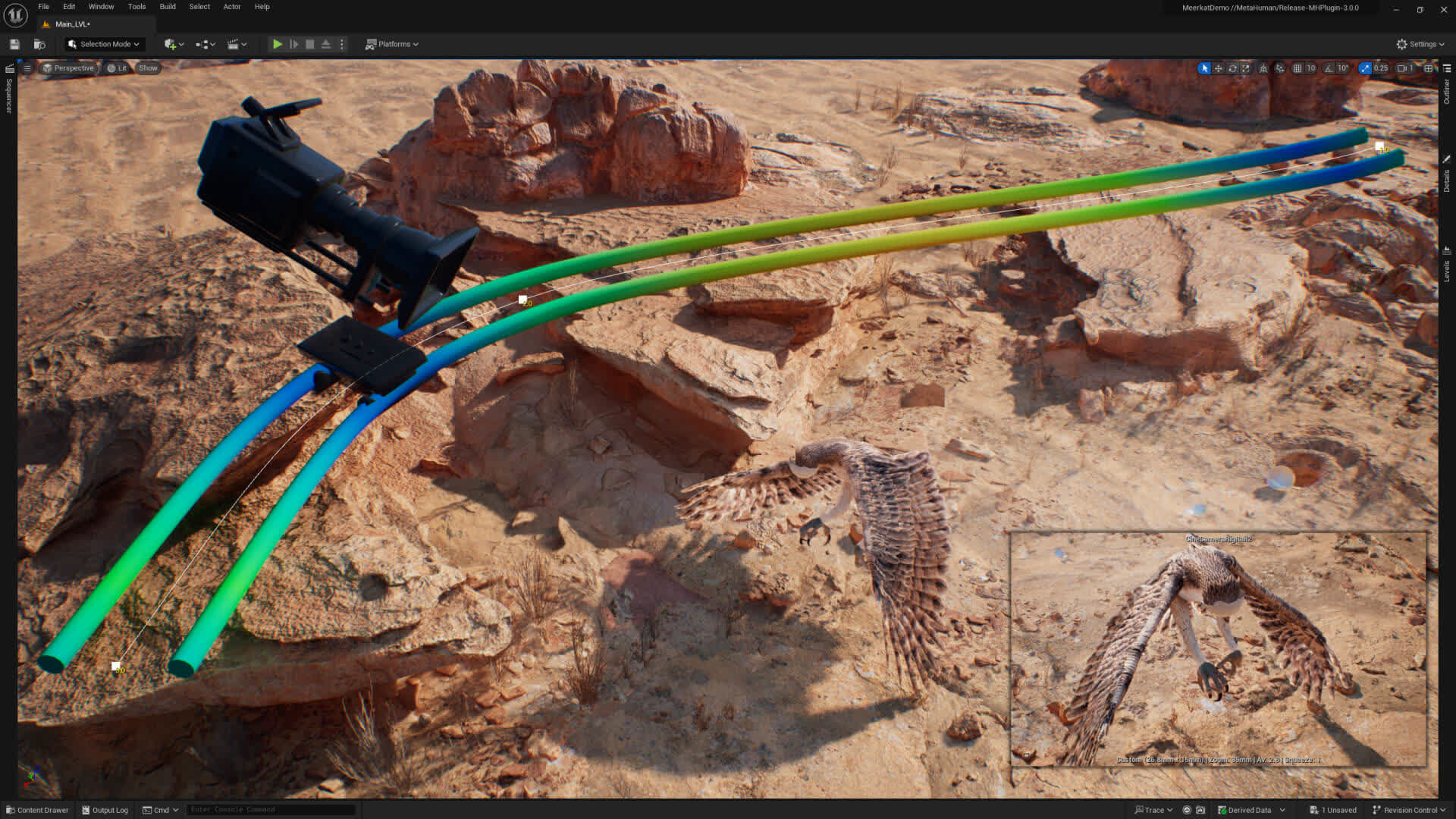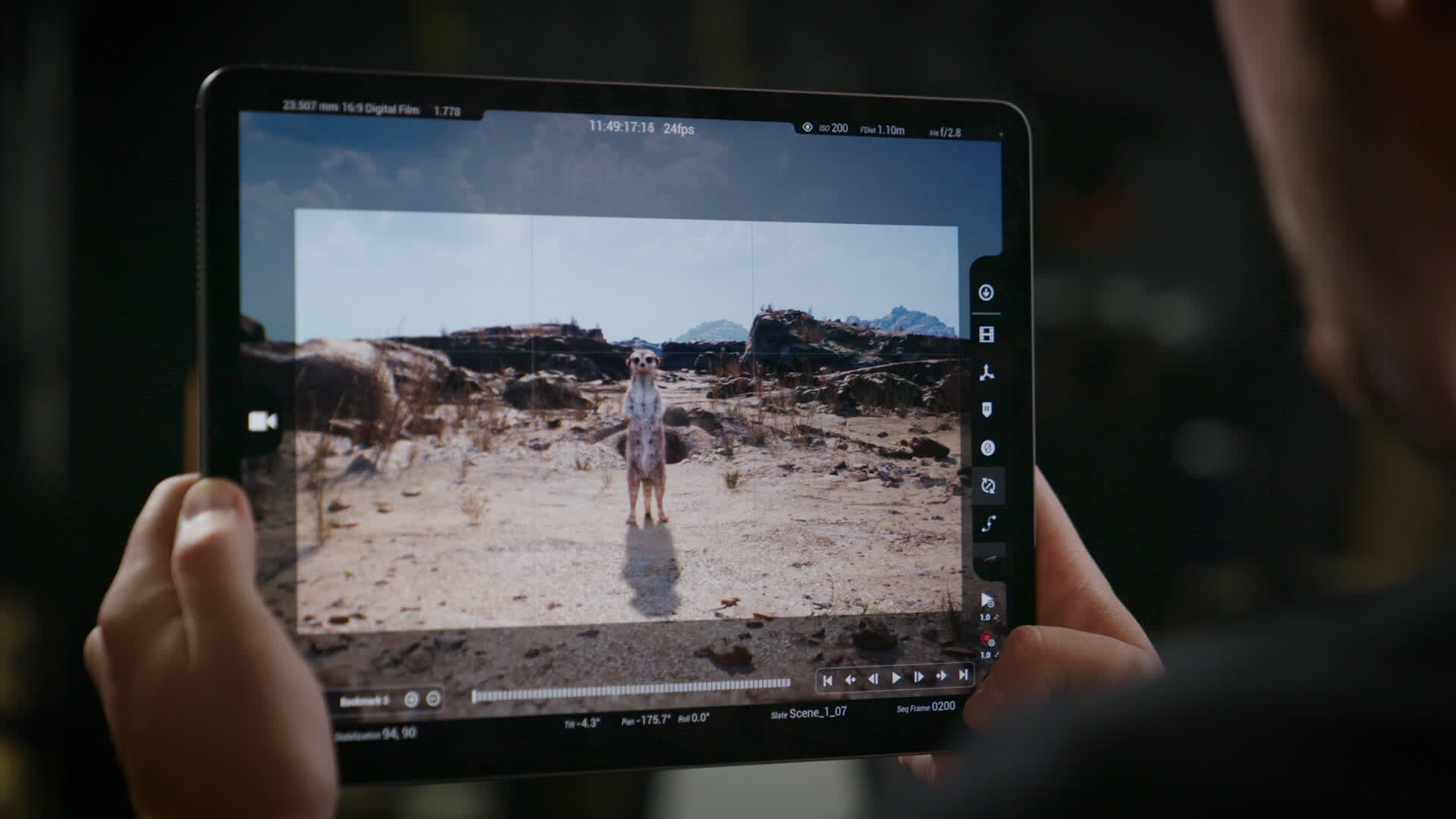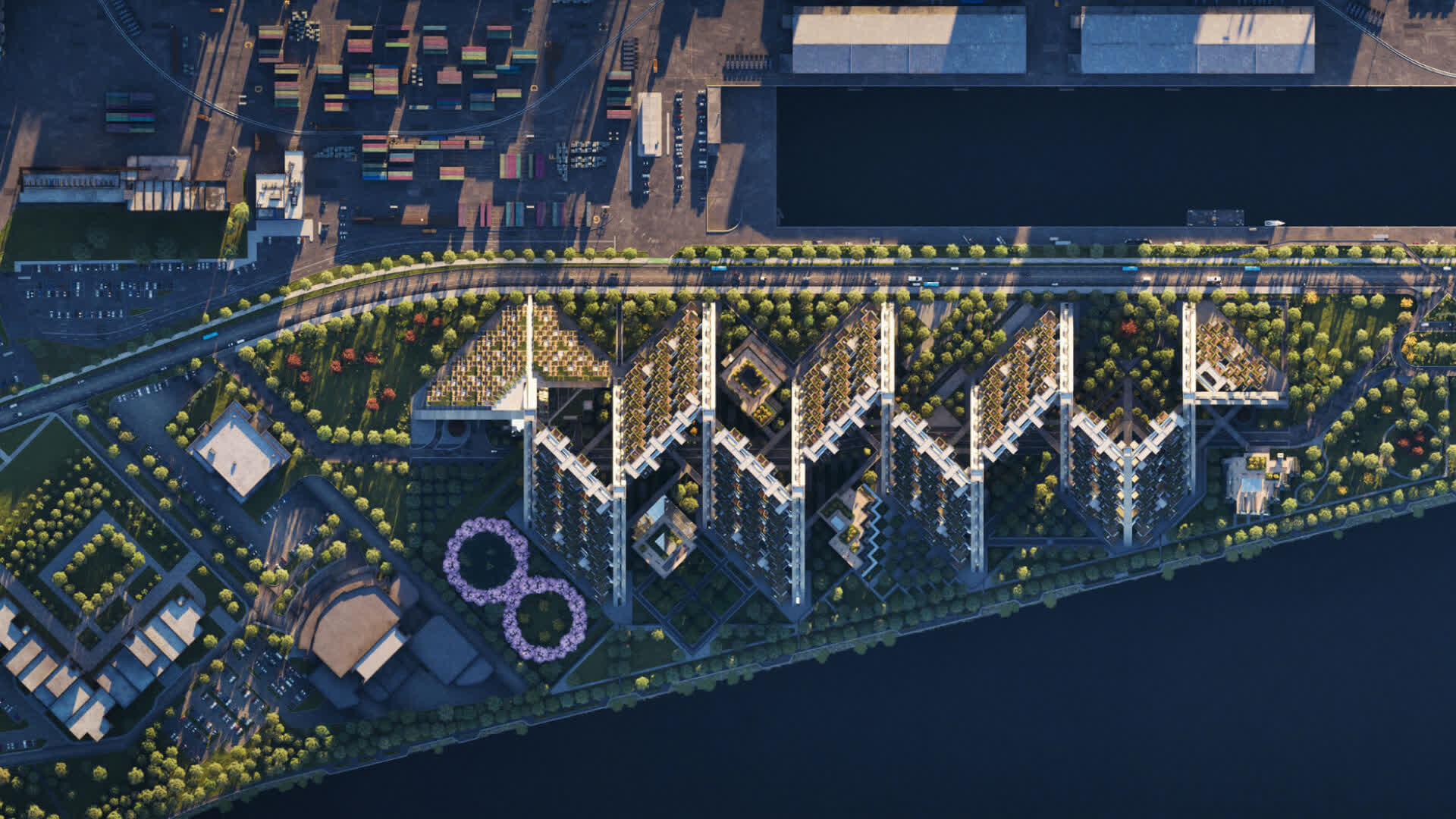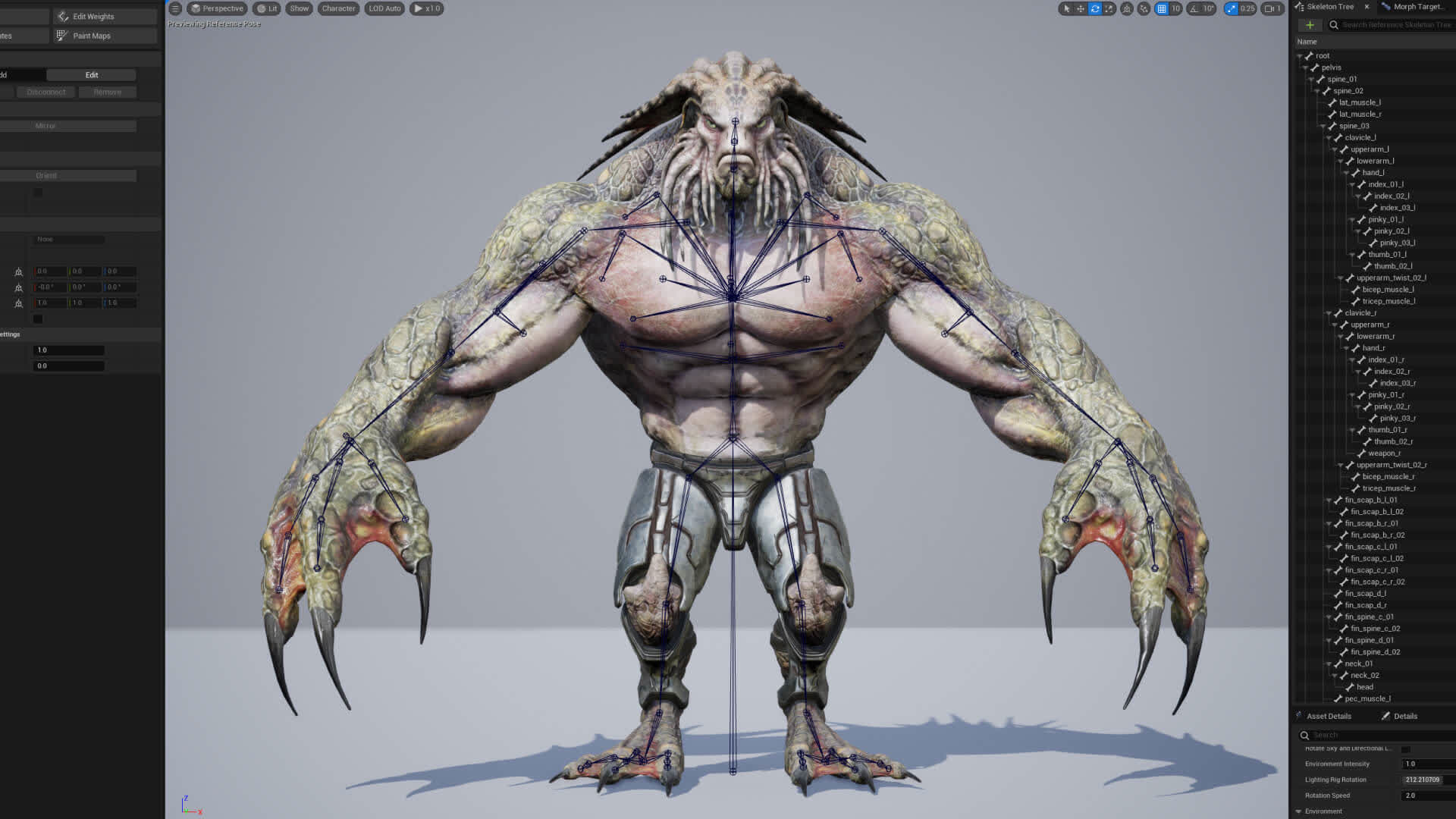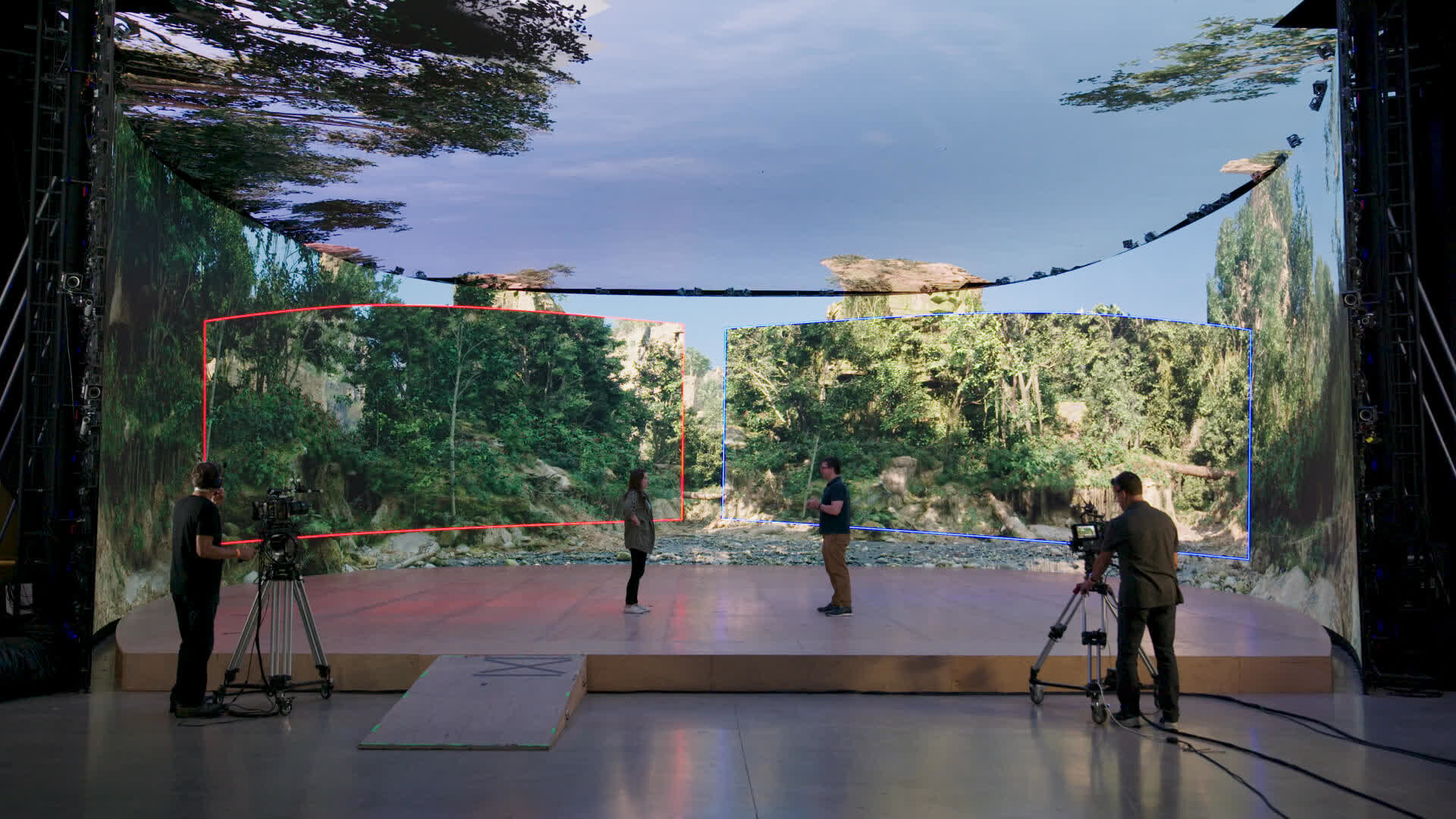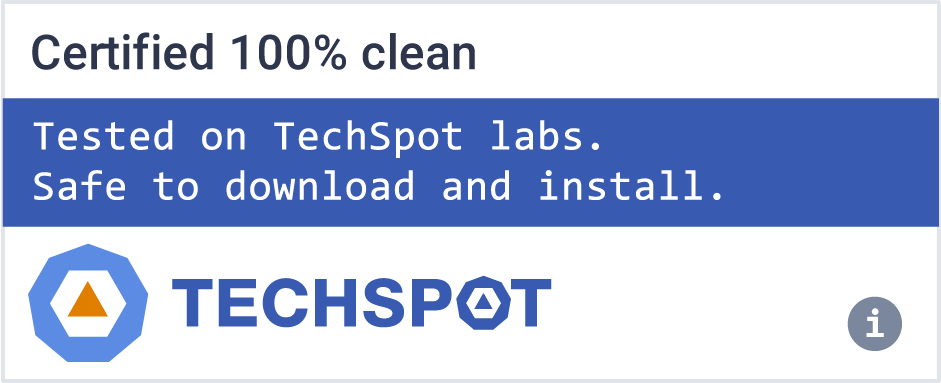Unreal Engine enables game developers and creators across industries to realize next-generation real-time 3D content and experiences with greater freedom, fidelity, and flexibility than ever before.
What is Unreal Engine?
Unreal Engine is a 3D game engine developed by Epic Games, developers of Fortnite. The Unreal Engine is now in its fifth iteration, having been around since 1998, it's one of the most established and well regarded game creation and 3D visualization tools. Unreal Engine has been used to create many popular games like PUBG, the Final Fantasy VII Remake, Street Fighter 5, Borderlands 3, Gears 5, Batman: Arkham City, and Valorant.
How many GB do you need for Unreal Engine?
Once installed, Unreal Engine 5 will take up anywhere from 50GB to 120GB but you will need more free space to save your projects. For a smaller game you might fit into 10-50GB, depending on the assets. All in all, working with a 512GB drive may be sufficient, but 1TB or 2TB is recommended.
What are other Unreal Engine 5 system requirements?
For PC, you need Windows 10 64-bit or newer, a quad-core Intel or AMD CPU that is 2.5 GHz or faster and 8 GB RAM. For macOS, you need Big Sur, quad-core Intel 2.5 GHz or faster and 8 GB RAM. For Linux, Ubuntu 18.04, a quad-core Intel or AMD 2.5 GHz or faster and 32 GB RAM.
Does it cost to use Unreal Engine 5?
Unreal Engine is free to use for creating linear content like films, and for custom and internal projects. It's also free for startup game development. A 5% royalty kicks in if and when your title earns over $1 million dollars.
Which is easier to use, Unity or Unreal Engine?
There is no right answer to that question. Both game engines are extremely robust and offer a fully featured free version to get you started. Both have strong communities in which you can participate and consult with. The general consensus at this stage is that Unity and Unreal Engine both are beginner friendly and won't require advanced programming knowledge for simple projects which will get the ball rolling as you learn.
Mobile
Designed for mobile, now and in the future. From simple 2D games to stunning high-end visuals, Unreal Engine 4 gives you the power to develop your game and seamlessly deploy to iOS and Android devices.
Blueprints
Blueprint visual scripting enables you to rapidly prototype and build complete games, simulations and visualizations without the need for programming. Blueprint tools and a visual debugger are included with Unreal Engine 4.
Tools
The Unreal Editor is a fully integrated suite of tools for building every aspect of your project. Advanced features include physically-based rendering, UI, level building, animation, visual effects, physics, networking, and asset management.
New: Volumetric Fog
Create incredible ambience and mood in your environments using the new Volumetric Fog! Varying densities are supported so you can simulate clouds of dust or smoke flowing through light shafts, and any number of lights can affect the Volumetric Fog.
New: Image-Based (FFT) Convolution for Bloom
Create physically-realistic bloom post-process effects using the new image-based (FFT) convolution feature! Unreal Engine 4.16 ships with a FFT Bloom that empowers artists to use custom bloom kernel shapes, with total control over the intensity in order to match the results they imagine.
New: Release Games on Nintendo Switch
Registered developers can now build and release games for the Nintendo Switch! Unreal Engine 4's production-ready Nintendo Switch support is certification compliant, enables networked multiplayer, and provides access to multiple rendering pipelines - deferred, mobile forward, and clustered forward - to enable you to ship virtually any type of game for Nintendo Switch.
Source Code
Every Unreal Engine 4 developer has access to the complete C++ engine and editor source code. Having full source code gives you the power to customize your game, and makes it easier to debug and ship. Join Epic Games and the Unreal Engine community in updating and extending more than three million lines of code available on GitHub.
Virtual Reality
Visual fidelity combines with high performance to create engaging, immersive VR experiences in UE4. Our rendering pipeline gets you to 90 Hz stereo framerate at high resolutions with no code changes required, while scalable tools mean you can develop everything from simple scenes to complex cinematic environments. All with an iteration speed that makes your creative process easier.
Marketplace
Accelerate your development with sample games and scenes, art and audio, Blueprint logic, and even C++ code. Buy content to add to your project, or create and sell your own.
One engine, one workflow
With Unreal Engine 4, you can learn one engine and one workflow to meet all of your needs now and in the future. From mobile projects to super high-end console and PC games, Unreal Engine is in use by indies and professionals around the world.
Own the high end
Push your visuals to the limit on PC, consoles, and VR with custom lighting, shading, VFX and cinematic systems. Create beautiful visuals for architectural visualizations, simulations, digital films, and more.
Everything you need to get started
The Marketplace provides a wealth of production-ready game content, asset packs, documentation, sample projects, tutorials, and demos. Get up to speed rapidly with high-quality, UE4-ready items suitable for a wide range of art styles and game genres.
Niagara Platform Support and Usability Improvements
In our continuing effort to provide industry-leading effects tools, Niagara has received an expanded feature set, substantial quality of life improvements, and Niagara effects are now supported on Nintendo Switch.
GPU-Only Texture Sampling in Niagara
You can now sample a 2D texture or a pseudo-volume 2D texture in your particle scripts! Create amazing effects such as rendering the scene's depth, color and normal information using a Scene Capture Actor and use that to reconstruct the environment within a Niagara particle system with the particles' potential and kinetic energy visualized as emissive light.
What's New:
Refinements to core UE5 rendering features
With this release, we've continued to refine all core UE5 rendering features to address our ongoing goal of making it easier for developers to leverage them at higher quality in games running at 60 fps on next-gen consoles; the improvements also offer higher-quality results and enhanced performance for linear content creators.
Specifically, Nanite has faster performance for masked materials, including foliage, and can represent a greater range of surfaces due to the new Explicit Tangents option, while Lumen with Hardware Ray Tracing has expanded capabilities that include multiple reflection bounces, and delivers faster performance on consoles.
Other areas with notable advancements include Virtual Shadow Maps (VSM) – which is now Production-Ready – Temporal Super Resolution (TSR), Hair Grooms, Path Tracing, and Substrate.
Multi-Process Cook
In another useful improvement, developers can now leverage additional CPU and memory resources when converting content from the internal UE format to a platform-specific format, significantly reducing the time it takes to get a cooked output from a build farm server or on a local workstation.
Enabling Multi-Process Cook launches subprocesses that perform parts of the cooking work alongside the main process. Developers can select how many subprocesses they want to run on a single machine.
Cine Cam Rig Rail
Filmmakers can now emulate the workflow and results of traditional camera movement along tracks or on dollies, thanks to a new Cine Cam Rig Rail Actor.
The Cine Cam Rig Rail provides more refined controls than the existing Rig Rail, including the ability to choreograph settings like camera rotation, focal length, focus distance, and so on, at different control points along the path. It supports both in-editor and VCam workflows.
VCam enhancements
Talking of VCam, enhancements to the system in this release include the ability to review takes directly on the iPad for faster iteration; to simultaneously stream different VCam output for different team members – for example, with camera controls for the camera operator, without for the director – facilitating collaborative VCam shoots; and to record at a slower frame rate and play back at normal speed for easier capture of fast-moving action.
Experimental features
As well as these updates to core toolsets, Unreal Engine 5.3 introduces a number of exciting new Experimental features, which we expect to further develop in future releases. We'd love you to try them out and send us your feedback, but we don't recommend using them in your productions just yet.
Cinematic-quality volumetric rendering
Two new features, Sparse Volume Textures (SVT) and Path Tracing of Heterogeneous Volumes, introduce a number of new capabilities for volumetric effects such as smoke and fire.
Sparse Volume Textures store baked simulation data representing volumetric media, and can be simulated in Niagara or imported from OpenVDB (.vdb) files created in other 3D applications.
In addition, more complete support for rendering volumes is now available as Experimental in the Path Tracer. This offers the potential for high-quality volumetric rendering – including global illumination, shadows, and scattering – for cinematics, films, episodic television, and other forms of linear content creation directly in UE5.
Real-time use cases such as games and virtual production can also begin experimenting with SVTs for playback of volumetric elements, although performance is limited at this time and highly dependent on the content.
Orthographic rendering
Starting in UE 5.3, we're introducing orthographic rendering; this is useful for visualizing architecture and manufacturing projects, as well as offering orthographic projections as a stylistic camera choice for games.
Multiple areas of the engine have received attention to achieve parity between perspective and orthographic projections. Most modern features of UE5 are expected to now work, including Lumen, Nanite, Shadows, and Temporal Super Resolutions. Orthographic rendering is also available in the Unreal Editor, enabling users to make updates in a live setting.
Skeletal Editor
A new Skeletal Editor provides animators with a variety of tools for working with Skeletal Meshes, including the ability to paint skin weights.
Whether for quick prototypes or final rigging, this enables you to perform more character workflows entirely in the Unreal Editor without the need for round-tripping to DCC applications – so you can work in context and iterate faster.
Panel-based Chaos Cloth with ML simulation
Also designed to enable you to bring more of your creative workflows directly to UE, this release sees some updates to Chaos Cloth.
We've introduced a new Panel Cloth Editor and new skin weight transfer algorithms, and added XPBD (extended position-based dynamics) constraints as a basis for our future cloth generation in engine. This provides for a non-destructive cloth simulation workflow in which you can trade off speed for precision. In addition, the use of panel-based cloth can result in better-looking simulations.
Cloth can also now be simulated and cached in engine using the new Panel Cloth Editor in conjunction with the ML Deformer Editor.
nDisplay support for SMPTE ST 2110
And finally, in preparation for the next generation of LED production stages, we've added Experimental support to nDisplay for SMPTE ST 2110, utilizing NVIDIA hardware and Rivermax SDK. This lays the groundwork for a range of hardware configurations that open up new possibilities for LED stages – the most exciting configuration uses a dedicated machine for each camera frustum, maximizing the potential rendering resolution, increasing frame rate, and allowing for more complex scene geometry and lighting than previously possible.
This solution offers the ability to tackle challenges like wider angle lenses that require greater resolution and multi-camera shoots that stress current systems. It also implies lower latency in the system, due to simplification of the signal chain.

